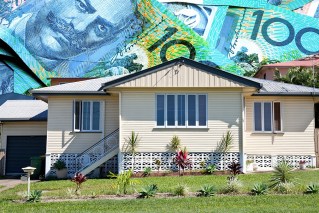SMSF property investment is worrying the markets


SMSFs in a shadow banking world. Photo: Getty
The growing $622 billion self-managed superannuation fund (SMSF) sector and its effects on the residential property market are starting to worry investment markets.
A report from Credit Suisse research analyst Hasan Tevfik describes the sector as “now part of the shadow banking system”.
This means they are not influenced by regulations introduced over the last 18 months to cut property investment and they are taking on high levels of risk as a result.
SMSFs step up
“As the major Australian banks have been slowing their exposure to the residential developers, we find selfies (SMSFs) are stepping in to fill the void,” Mr Tevfik said in his report.
The banks grew lending to residential property developers by 20 per cent in 2015 and Mr Tevfik said “so far, in calendar 2016, it is growing at an annualised rate of just five per cent. It shrank in the June quarter”.
The decline in bank lending has been driven by a number of factors over the past 15 months. These include growing restrictions on international investors, a crackdown by regulators on bank exposure to investment property and a tightening on lending requirements as new international bank capital requirements start to bite.
Mr Tevfik said as banks vacate the development funding space, SMSFs are moving into complex areas of lending that are normally the domain of sophisticated financiers, attracted by high returns.

Selfies are looking for a property gain. Photo: Getty
“Selfies are no doubt attracted to the double-digit returns on offer from residential developer mezzanine debt and senior preferred equity,” he said.
The SMSF sector is being channeled into property by a growing group of advisors servicing the sector.
While there are no hard figures on the flow from SMSFs to property developers, Mr Tevfik said “we guess (intermediaries like lawyers and accountants) are currently collecting $2 billion to $4 billion a year for residential developers. Maybe two-thirds of this is from SMSFs”.
One recent development in the sector comes from DomaCom, a company currently attempting to raise $10 million through a float on the Australian Securities Exchange.
The ATO will decide
DomaCom asked the Australian Taxation Office for a ruling on its business model as a target for SMSF investment. The ATO gave its assent and DomaCom claimed this meant SMSF investors could use its model to buy into properties to live in.
“The ATO has confirmed that using our structures a SMSF that owns less than 50 per cent of units in a sub-fund can rent a property out to anyone,” DomaCom CEO Arthur Naoumidis told The New Daily.
“For the first time, SMSF members can use some of their super money to invest in a property jointly with their children to help them acquire a house to live in,” he said.

Property is in the SMSF sights. Photo: Getty
If that claim is right, DomaCom has created a precedent in SMSF property investment. Super fund investments must pass a ‘sole purpose test’ which means they can only invest for retirement benefits, not pre-retirement life. So till now people can’t live in a property owned by their SMSF.
The New Daily asked the ATO to comment on Mr Naoumidis’ claims but prior to publication had not received a formal response.
It would be inflationary
Glenn Otto, Associate Professor of Economics at the University of NSW, told The New Daily a further move into residential property by SMSFs would impact prices.
“It would tend to push up property prices if people were to move superannuation funds from the share market to residential property. Particularly for free-standing homes.”
SMSF balances have grown by $18 billion in the last year. The average SMSF balance is $562,000 while in other funds it’s $64,000.
Mr Tevfik said SMSF investment in property is unlikely to trigger a systemic crisis in a downturn.
“Unlike the shadow-banks of the US sub-prime crisis, selfies have almost no debt and their involvement should limit the systemic nature of a potential housing downturn, in our view.”
However there could be dramatic losses by individual SMSFs in a property bust.
*The New Daily is owned by industry super funds.








